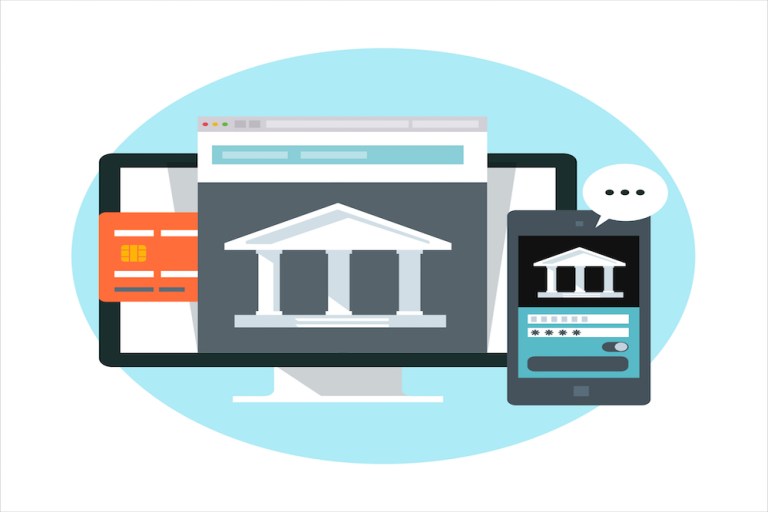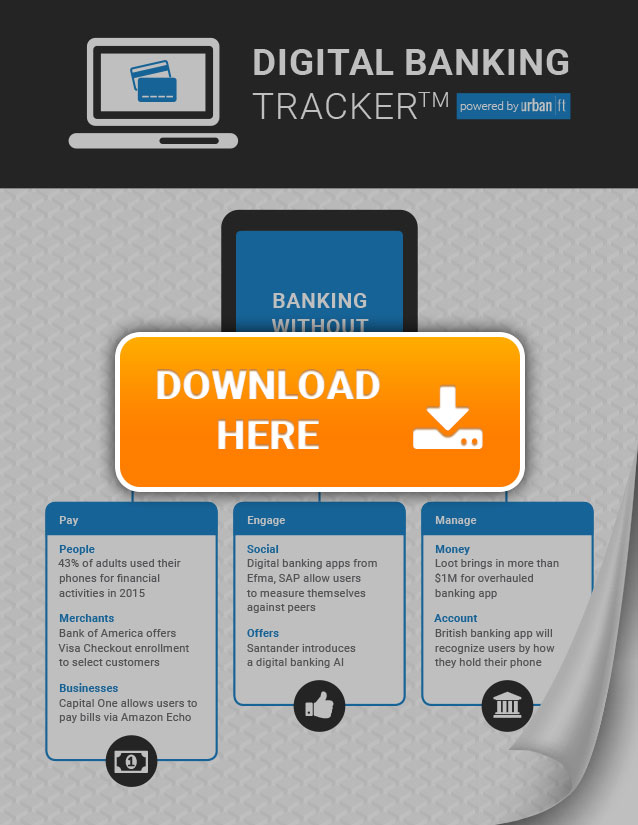New Canadian Digital-Only Bank Banking On User Experience

Digital banking is do or die in the age of the digital consumer, but how banks get there is all but clear. Should banks go it alone with a stand-alone digital bank, or embed a very robust set of clicks into their traditional set of bricks? This month’s Digital Banking Tracker™ features an interview with Dan Dickinson, EQ Bank’s Head of Digital Banking, who tells us why Equitable Bank made the decision to spin out EQ as a digital-only bank. That, and updates from around the space, including the moving and shaking of 48 players (including 10 new entries) awaits.
When Canada’s Equitable Bank rolled out its new digital-only bank, EQ Bank, in January of this year, the goal for the first year was modest – the bank hoped for 10,000 customer sign-ups. In less than two months, it had 15,000 customers. The positive consumer response perhaps wasn’t a complete surprise, considering the initial interest rate for the savings account was 3 percent. The challenge for the bank will be remaining competitive when the interest rate is ultimately dialed back and the offering itself – namely its features and user experience — need to steer the ship.
When PYMNTS recently caught up with Dan Dickinson, EQ Bank’s VP of Digital Banking, to talk about launching a digital-only bank, he had recently opted to pause the bank’s new account openings – by his account, in order to focus on ironing out kinks (primarily attributable to the unexpected applications surge and ensuing early heavy traffic/usage) and to ensure the experience moving forward will live up to the bank’s own expectations.
“The focus for us has to be customer experience,” Dickinson explained of the pause due to speed of growth. “It’s a bit of an unprecedented step – I don’t really know many banks that have a waitlist for their bank account.”
For Dickinson, the actual rollout of EQ Bank was two years in the making – “building everything from scratch – the technology stack, the team, the operations, the brand – everything,” he said. The stack itself, he said, uses “much more modern technology than sits at the back of the big banks in North America, which are 40 or 45-year-old systems, in a lot of cases.”
Functionality first
For inspiration and guidance, Dickinson and team first focused on other compelling mobile offerings – some from outside of the financial sphere, like Uber. “I know everyone uses them as an example, so it’s kind of boring at this point,” he acknowledged. “But there’s a reason and it’s because they got the design right, and they got the user experience right, and everything underneath is just riding on existing plumbing, but getting an experience much better by doing it.”
Taking Uber and translating what’s made it so successful and compelling and applying it to a digital-only bank experience was an exercise in looking through the consumer’s lens. The product itself, Dickinson said, isn’t something radically different. “It’s an online savings account, we’re not the first ones to do this, certainly. But I think we’re just trying to find a few things that fix the experience, like getting rid of the old construct of checking versus savings,” he said. “Why do I have those things? They don’t make any sense to a customer – they’re just bank constructs.”
The goal was to make tweaks to the familiar bank offering to create a rethought offering that makes “more sense,” he said, “To the point where somebody says, ‘Why wasn’t it always like this?’”
While Dickinson was able to take cues from tech players from across industries, ultimately, he said, Canadian bank customers want the assurance of traditional bank security, such as CDIC coverage. “Otherwise a pure tech player will get you into this space,” he said. “While I think those guys are actually adding long-term value to the industry by pushing everyone … I think what we’re trying to do is maybe be a bit of a bridge – actually be a bank, have a Schedule I license, have the 45 years of stability and history, but hopefully bring a little bit more modern technology to bear.”
Dickinson was able to roll out with a 3 percent rate because, as he explained, as a digital-only bank, EQ Bank doesn’t have the expense of supporting a branch network. The rate, he said, helped EQ Bank get out of the gate – but the functionality will be, he expects, the long-term value. “Nobody joins a bank because of great usability but you recommend one to other people because of it – or maybe you don’t leave,” he said.
Unlike many other high-interest savings accounts where customers typically may have to transfer funds to a traditional non-interest checking account to make payments or make P2P transfers, Dickinson said, EQ Bank offers “a lot of payment functionality.” And although he never intends to issue checkbooks, Dickinson said, he wants to break through certain bank constructs that don’t seem to make a whole lot of sense.
“Our research is that there are billions of dollars sitting in accounts earning no interest,” he said. That’s one of the reasons why Dickinson and team grappled over what to call their account, he said. “It’s not a checking account but it’s more than a savings account in the customer parlance. So, we call it a savings-plus account, because we frankly couldn’t quite figure out what else to call it,” he said with a laugh. He added, “But having a checking account over here where you can do transactions but earn no interest or having this other account where you can earn interest but can’t really do transactions, it’s a bank construct that’s been foisted on the customers and we don’t really get it. We have this one product type – a customer won’t even think of it as a product – it’s just the account.”
Demographics, shmemographics
Without a branch network and ATMs, Dickinson expected there to be some reluctance among consumers to sign up for a digital-only offering – “especially in certain ages,” he said. And while he acknowledges that their estimates were “probably a little conservative,” he said the digital hurdle not being much of an initial obstacle was a surprise.
Initial customers range in age from 19 to 102, Dickinson said. And, he said, it’s skewed more psychographic than demographic, which came as a bit of a surprise. “It was about who was comfortable working with a digital-only bank — or a digital-only company in general — who self-manages a lot and is comfortable working with this kind of thing. So, Netflix users or people who have the Nest thermostats, you know, that sort of thing.” So being comfortable with technology has been important but, Dickinson acknowledged with a laugh, “frankly, a 3 percent interest rate helps them get over those fears a little.”
Canadian to the core
While the bank’s customer ages may run the gamut, something Dickinson wants to ensure is the offering remains decidedly Canadian. That means working with vendors that are either Canadian themselves or understand the Canadian market, he said. Bringing on international vendors can be a challenge, he said. Like trying to explain “there’s slight differences and nuances in the Canadian system – not the least of which being the French language – that kind of trips some vendors up sometimes,” he said. “So working with someone who had an international bent already, had Canadian experience, had a very solid core banking system that we could build on and then, giving me enough flexibility in the front end to build a completely custom user experience at the website and the mobile app layer was really key for me.”
It also gives EQ Bank flexibility for the future, Dickinson said. “We don’t even know all the directions we might go in yet with this thing. We know we’re really focused on the deposits and savings business. But who knows where we might want to go in the future. We bought a core system that we thought was extendible enough to keep us going for a long time and also one that I don’t have to customize,” he said.
In the near future, Dickinson said, his immediate focus is getting the bank’s customer experience right, “hence, we did something weird like stop new account openings and turned on the waitlist, but for that exact reason. It would have been easy just to keep taking new accounts,” he said.
Editor’s note: This week, annual interest on EQ Bank’s EQ Savings Plus account was changed to 2.25 percent.
To download the April edition of the PYMNTS Digital Banking Tracker™, powered by Urban FT, click the button below.
The PYMNTS Digital Banking Tracker™ brings you the latest news, research and expert commentary from the FinTech and consumer banking space, along with profiles of dozens of companies in the industry.
